ISSUE 24 | SPRING ‘23






at the University of Florida

AT THE UNIVERSITY OF FLORIDA
UNIVERSITY OF CENTRAL FLORIDA
EDITOR-IN-CHIEF Asma Ahmed
MANAGING EDITOR Zoey Young
FINANCIAL DIRECTOR AJ Johnson
PUBLIC RELATIONS DIRECTOR Grace Casanova
PUBLIC RELATIONS DIRECTOR Jenna Ho
WEB EDITOR Liana Progar
WRITER Sketch Mathew • Liana Progar • Caitlyn Mari
Koerner • Khadija Nemazie • Monique Toon • Norah
Layne •
PHOTOGRAPHER Nathan Swinburne • Samuthira
Sivashanmugham • Abbigail Huynh •
DESIGNER Arianna Flores • Manaal Sheikh • Maliha Versi
• Isabella Maldonado • Sunitha Kishore •
UNIVERSITY OF SOUTH FLORIDA
EDITOR-IN-CHIEF Sanikaa Thakurdesai
MANAGING EDITOR Amy Pham
CONTENT EDITOR Krisha Patel
TREASURER Anagha Hesaraghatta
DESIGN EDITOR Amreen Naveen
PROMOTIONS DIRECTOR Quyen Tran
PROGRAMMING DIRECTOR Ishita Sen
PHOTGRAPHY EDITOR Mridula Singh
WRITER Isha Harshe • Khoa Hoang • Nimrit Doad •
Fariah Ansari • Reagan Huynh • Anushri Gade • Serena
Bhaskar • Abdul Moeed Zahid • Sayona Jose • Vaishnavi
Yelchur • Vaidehi Persad • Riya Choksi • Aditi Dhruve
•Yasawi Nimmagadda • Alphy Maria Antony •Merita
Maria Antony • Sanikaa Thakurdesai • Amy Phan • Krisha
Patel • Quyen Tran •
DESIGNER Isha Harshe • Koha Hoang • Daniela Kate
Abaquita • Sana Lulu • Abdul Moeed Zahid • Vaidehi
Persad • Dan Pham • Jessenia Abrigo • Riya Choksi •
Nistha Sevak • Yasaswi Nimmagadda • Merita Mary
Thomas • Amreen Naveen • Ishita Sen •
PHOTOGRAPHER Kaniz Angel • Anna Jade • Koha
Hoang • Mridula Singh •
PROMOTIONS Andrea Zdunkevich • Quynh Phan •
COVER
PHOTO Refat Roja
DESIGN Aryam Amar
MODEL Lesley Banh and Phoebe Wright
FOLLOW US ON SOCIAL MEDIA
FACEBOOK Sparks at the University of Florida INSTAGRAM @uf_sparks_mag
sparks-mag.com
NATIONAL BOARD
EXECUTIVE DIRECTOR Jason Liu
CHAPTER DEVELOPMENT DIRECTOR Aleem Waris
MARKETING DIRECTOR Ingrid Wu
DEVELOPMENT DIRECTOR Chelsey Gao
CHAPTER MANAGER Bryant Nguyen
CHAPTER MANAGER Samia Alamgir
SOCIAL MEDIA MANAGER Sally Zhu
LEAD GRAPHIC DESIGNER Esther Zhan
WEB DEVELOPER Chris Tam
2 | SPRING 2023
AT THE UNIVERSITY OF FLORIDA
E-BOARD

EDITOR-IN-CHIEF Mercy Tsay • MANAGING EDITOR Loryn Smith • FINANCIAL DIRECTOR Marium Abdulhussein
COPY EDITOR Aliza Ahmed • DESIGN EDITOR Aryam Amar • DESIGN EDITOR Elyza Navarro


• COPY EDITOR Karen Zhang • COPY EDITOR Hanna De La Garza












PHOTOGRAPHY EDITOR Refat Roja • PUBLICITY DIRECTOR Jackie Truong • PUBLICITY DIRECTOR Destiny Tran
STAFF
WRITER Aize Hassan • WRITER Ally Maldonado

WRITER Dzung Nguyen
WRITER Ian Kim



WRITER Isabelle Coleman • WRITER Justin Fernandez

WRITER Lex Mundy • WRITER Morgan Hurd






• WRITER Yeleeya Li • DESIGNER Divya Somayaji • DESIGNER Kate Lynne Pudpud

• DESIGNER Leyun Wang
DESIGNER Mady Edwards
DESIGNER Mya McGrath
WRITER Tarryn Nichols


DESIGNER Lauren Shee
DESIGNER Shiyin Hong •

DESIGNER Srinithi Reddy • DESIGNER Tiffany Vivi Nguyen


PHOTOGRAPHER Eileen An
PHOTOGRAPHER Leyun Wang
Nguyen






Ashley Twilley
PUBLICITY Vy Nguyen





PHOTOGRAPHER Cami Chan
PHOTOGRAPHER Carolina Tortorelli
PHOTOGRAPHER Kat Tran
Maria Vanderbilt
•
•
•
•
•
•
•
•
•
•
•
•
•
•
•
•
• PHOTOGRAPHER
•
•
•
•
•
•
•
•
PHOTOGRAPHER Hayli Balgobin
PHOTOGRAPHER Macy Phan
PUBLICITY Angela Han
PUBLICITY
PUBLICITY Ellie Uchida-Prebor
PUBLICITY Michelle Tang
PUBLICITY Tammy
SPRING 2023 | 3
A LETTER FROM THE EDITOR

I am honored to present to you Issue 24! I hold this issue near and dear to my heart, not only because of the stories but because it is my final issue with this team. To me, this rowdy group of writers, designers, photographers and PR staffers is family. I am so proud of everyone who worked on this magazine. We had so many new staffers who were learning the ropes and figuring things out along the way. It has been a joy to see how they have grown throughout the year.
I think it is only fitting that the theme of this issue is Bloom. It focuses on how we thrive and flourish as a community and as individuals, and it also highlights how we persevere
Dear reader, WITH LOVE,
through adversity. Like every issue, we have our highs and our lows but I think that’s what brings us together.
I joined Sparks Magazine fall of 2020, a time when I was struggling to maintain connections and foster new ones. Sparks gave me an outlet and has allowed me to work with amazingly talented and creative individuals. I never would have imagined that I would go from designer to editor-in-chief, but I also never imagined that I would go back into print publication after high school. I am forever thankful for the opportunities Sparks has given me and how it has positively impacted my life.
Growing up I didn’t have a lot of Asians in my community. I didn’t feel othered, but I didn’t feel like I fit. It wasn’t until I connected to an Asian community that I realized what I was missing out on. From there, I made it a goal of mine to highlight Asian and Asian American achievements whenever I could. If I could help one other person see their own potential it would be well worth it. Within this issue, we highlight excellency within the Asian American community at UF, in Gainesville, and around the country. From local eats to cultural fashion, we celebrate it all.

I’d like to end this off with a big thank you to my executive board, I appreciate you all for your contributions and support for all my silly ideas. I would also like to thank Sparks national board for all their guidance throughout the year. Of course, this issue couldn’t have happened without our amazing staff and the endless hours they’ve poured into this issue. And lastly, thank you for picking up this magazine and I hope you feel empowered by the stories to come.
MERCY TSAY
EDITOR-IN-CHIEF
4 | SPRING
2023
MISSED NOTIFICATIONS MERCY TSAY FROM MAHJONG TABLES TO MULTIVERSE ALLY MALDONADO STAR FASHION SHIYIN HONG DANCING: CULTURE AND COMMUNITY AIZE HASSAN A GODDESS’ COMPASSION MORGAN HURD CALLING HOME JUSTIN FERNANDEZ EVERLASTING LOBES OF LOVE TARRYN NICHOLS EMPOWERING STEREOTYPES YELEEYA LI CELEBRATING ASIAN SMALL BUSINESSES ISABELLE COLEMAN TWO PART HARMONY LIANA PROGAR & AJ JOHNSON AN AMERICANIZED TRADITION IAN KIM LOST IN TRANSLATION LEX MUNDY MASALA MASLA NIMRIT DOAD REMEMBERING SUNDAY DZUNG NGUYEN 06 08 10 12 14 16 18 20 22 24 26 28 30 32 Nimrit SPRING 2023 | 5
Notification Center
Korean Undergraduate Student Association: Atlanta Trip

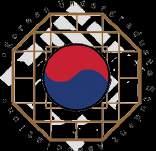










Jan. 14-16
Chinese
Feb. 9


Filipino Student Association: Woodser



Feb. 17-18
Asian
 American Student Association: CASANova GBM
American Student Union x OAPIDSE: Tiny Desk Series
Starting off the year strong, the Korean Undergraduate Student Association took its members to Atlanta, Georgia!
CASANova Theta Class celebrated hosting their first GBM: Lanterns of Love!
The Filipino Student Association took to the woods in their annual camping trip to Ginnie Springs to celebrate the new RAKA pairings!
Hello Kitty Keychain and Andres perform for this new collaborative series in the APIDSE Office!
American Student Association: CASANova GBM
American Student Union x OAPIDSE: Tiny Desk Series
Starting off the year strong, the Korean Undergraduate Student Association took its members to Atlanta, Georgia!
CASANova Theta Class celebrated hosting their first GBM: Lanterns of Love!
The Filipino Student Association took to the woods in their annual camping trip to Ginnie Springs to celebrate the new RAKA pairings!
Hello Kitty Keychain and Andres perform for this new collaborative series in the APIDSE Office!
Feb. 21 6 | SPRING 2023
written and designed by Mercy Tsay
Asian Kaleidoscope Month: Opening Ceremony





March 2

Japanese Student Association: Undokai






March 4
Vietnamese
March 4

Health Educated Asian Leaders: Spring Health Panel



March 24
 Student Organization: Pho 50
Kicked off Asian Kaleidscope Month with phenomenal performances and guest performer DanAKADan!
The Japanese Student Association enjoyed their first sports day in collaboration with schools across Florida and Georgia!
The Vietnamese Student Organization serves a variety of delicious food to raise money for One Body Village!
A panel with admission officers from around Florida and the U.S. that helped students prepare for future admissions!
Student Organization: Pho 50
Kicked off Asian Kaleidscope Month with phenomenal performances and guest performer DanAKADan!
The Japanese Student Association enjoyed their first sports day in collaboration with schools across Florida and Georgia!
The Vietnamese Student Organization serves a variety of delicious food to raise money for One Body Village!
A panel with admission officers from around Florida and the U.S. that helped students prepare for future admissions!
2023 | 7
photo courtesy/ UF KUSA, UF CASA, Zeid Abdurahman, Julia Guerrero, Joy Chen, Cynthia Nguyen, UFVSO, UF HEAL SPRING
From Mahjong Tables to Multiverses

How filmmakers have turned the Asian American experience into silver screen blockbusters
written by Ally Maldonado
Whenasked how he felt about his Asian American identity and how it affects his views on the film industry, Filipino American filmmaker Cole Bacani had nothing but positive sentiments, saying, “I feel like now is a great time to be Asian and making films.”

Asian American filmmakers have made a noticeable and vital impact in recent decades; movies like “Joy Luck Club” paved the way for Asian American stories to take more space on the screen. “Everything Everywhere All at Once,” which was released in late 2022, became a cultural phenomenon, sweeping the awards circuit and being loved by millions. Seeing oneself on screen has been a sentiment shared by people of color all over America, represented in movies that tell stories that they can see themselves in.
Movies like “Joy Luck Club” started the conversation on the complex identities of Asian Americans and, as years pass, more movies celebrating and exploring the diaspora of Asian Americans are being released.
Mahjong Tables and Mothers
1993 saw the release of “Joy Luck Club,” a movie based on the novel of the same title written by Amy Tan. The story follows four Chinese women navigating their relationships with their adult Chinese American daughters. Directed by Wayne Wang, it became the first film of its kind. Opening doors to tell the nuanced, emotional stories of those who find themselves in the middle of a clash of cultures trying to keep both Chinese and American aspects of their lives in harmony. Prior to this movie, there was a lack of complexity to Asian characters, being stuck in roles like the martial arts genius or the quiet, soft-spoken model minority. This movie made room for stories that focused on the complexity of the identity of Asian Americans. It wasn’t until 2018 that another film with an all-Asian cast was again on the screen: “Crazy Rich Asians.”
East Versus West
“Crazy Rich Asians” focuses on Singapore’s top 1% and their insistence on the idea that foreigners do not belong with them because they are not — and will never be — the same. Director Jon M. Chu later explained in an interview with Digital Spy that the movie is about “Rachel’s journey of finding her own self-worth.” This was the first movie to host an all-Asian cast since “Joy Luck Club” 25 years earlier.
At the climax of the movie, there is a pivotal scene over a mahjong table, known as the “mahjong monologue.” This scene unfolds between Rachel and Eleanor and focuses on this clash between the cultures of Asian American and Asian. Eleanor opens to Rachel saying, “There’s a Hokkien phrase. Ka gi lan. It means ‘our own kind of people.’ And you’re not our own kind.” This scene has become one of the outstanding parts of the movie as Asian Americans applauded its cinematography and how it portrays the difficulties of “living the American way” instead of the traditional way as Eleanor alludes to.
This “East versus West” mentality is heavily focused on in the movie “The Farewell.” Directed by Lulu Wang and based on “an actual lie,” this movie takes its roots from Lulu Wang’s personal life where she tells the story of a matriarch who is diagnosed with stage four lung cancer and whose family decides not to tell her about her terminal diagnosis. The film focuses on the differences between those who grew up with an “American” way of
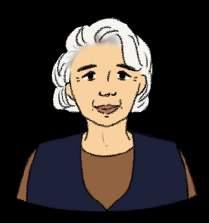
8 | SPRING 2023
photos by/ Hayli Balgobin design by/ Lauren Shee model/ Stephen Kostewicz
living versus those living in Asian countries. Awkwafina, a half-Chinese and half-Korean American actress, stars in the prominent role embodying the “American way” as she pleads with her family to decide to tell her “Nai Nai,” which is Mandarin for “grandma” specifically the father’s mother, of her diagnosis. Her family members stop her at every moment and during the movie her uncle tells her, “In America, you think one’s life belongs to oneself. But that’s the difference between the East and West.”
The director Lulu Wang once mentioned in an interview with The Guardian that she “would love it if white men were asked the same questions” as her, highlighting the well-known sentiment of the Asian American diaspora regarding the representation of their varied experiences.
Asian American Filmmaker Spotlight: Cole Bacani on his film “Everything Stays”


Family versus the future is a sentiment that a lot of Asian American individuals can relate to. In Filipino American filmmaker Cole Bacani’s short film “Everything Stays,” he tackles the story of a college-bound boy making the decision to either stay near his cousins in Illinois or pack up and move everything to California to pursue his dream of directing. The story comes straight from Bacani’s life with his actual cousins playing the large ensemble of the film. Bacani stated that his short film “‘Everything Stays” is very specific and with that, a very specific story, and yet there are people all around who are able to see themselves in it.” Bacani went on to say, “That’s why representation matters the most; it’s important to know that your experiences are shared and you are seen.”
Jessie Li White, a recent University of Florida alumni, mentioned that “The Farewell” does more than bring the conversation of East versus West to the table; she mentioned that “it was the first movie where I saw pieces of Chinese culture, in the decor, where it wasn’t labeled as ‘this is Chinese’ very loudly. Pieces of my life were in this movie.” Jessie also shared “I want to see more movies where the actors are just Asian; it isn’t some plot point or something that ‘makes their character’ - it just is.”

This idea was also shared with Tatum Homer-Dibble, fourth-year telecommunications major at UF, as she recalled her thoughts on “Crazy Rich Asians.” “I want to see a movie about normal middle-class Asians too,” she said. “I want to see more complex characters, not just rich characters and that being their only personality besides being Asian.”
This sentiment is shared by Katrina Lee, fourth-year telecommunications major at UF, as she said, “It’s good to share your stories on screen. It builds community, and you feel less isolated in your own culture.” Lee is currently in New York City and when asked how she felt about the coming years in terms of Asian American filmmakers she shared, “When I was growing up, I thought that there could only be one Asian American filmmaker but now I see all these amazing creators who look like me, and I’m just excited for the next coming years to see what’s next.”
Filmmakers like Bacani have continued to tell their stories on the screen. They are taking up space as directors, writers and artists of all forms to give glimpses of the Asian American experience and what it means to exist within the Asian American diaspora. Seeing rooms that look like ours, food that looks like ours and family conversations that sound like ours are vital to continue to give space for Asian American stories on the screen and to allow for our lives to be represented to even larger audiences. Bacani’s sentiment rings loud and clear: it truly is a great time to be Asian and making films. Telling stories that represent our experiences, our feelings and our identities. The future of Asian American stories is in the hands of people like Bacani, but also in those of any aspiring artist ready to tell their story and to take up their space as a creator.
“I want to see more movies where the actors are just Asian; it isn’t some plot point or something that makes their character - it just is”
- Jessie Li White
“It’s a great time to be Asian and making films”
SPRING 2023 | 9
- Cole Bacani
Destiny Tran




 photos by/ Macy Phan
design by/ Shiyin Hong graphics/ byunilho Pixabay
photos by/ Macy Phan
design by/ Shiyin Hong graphics/ byunilho Pixabay
u wu!!
10 | SPRING 2023
Linna Lu
CUTE


 Thien-y Nguyen
Yoonmi Hwang
Gurleen Dhillon
Thien-y Nguyen
Yoonmi Hwang
Gurleen Dhillon
SPRING 2023 | 11
Dancing: Culture & Community

How Asian organizations at UF create a unique environment to build community
written by Aize Hassan
Amidst the beats of a drum, a golden dragon weaves between the audience before leaping onto the stage with a roar. As with tradition, the dragon dance signaled that the show had begun. This past January, the Chinese American Student Association hosted its annual Chinese New Year showcase. The atmosphere was electric, with humorous skits, several appearances from the loong, a Chinese dragon, and most importantly – jaw-dropping dance performances. Dance is a core tenant of many Asian Pacific Islander Desi American organizations on campus. By showing off culture through clothing and expression, dance creates a unique environment to make friends and build a community among Asians on campus.
THE ROOT OF IT
Dance is extremely prevalent in Asian culture itself, with each culture having a rich history. People grow up watching these dances during special occasions or holidays: bhangra and Bollywood dance are showcased in Desi weddings, fan dancing is used to celebrate Chinese New Year and bon Odori is performed at the Japanese Obon festival to commemorate ancestors. Bhangra, fan dancing, bon Odori, Bollywood dance, tinikling and K-pop dancing are just a few of the dances the culture offers and the main focus of APIDA organizations. “In Chinese culture,” said fourth-year CASA dance coordinator, Shailyn Yu, “there’s a lot of dances that include props such as short fans, long fans, ribbons, water sleeves, traditional lions and dragons.”
The difference between assimilation and acculturation is key when understanding the origin of dance within Asian American communities on American college campuses. After the massive and fairly recent wave of Asian immigration to the U.S. in the 1990s, many families have only had the chance to acculturate, or retain one’s culture as a minority while still adopting the majority’s norms. Rather than completely abandoning their native culture, which would be assimilation, young Asian Americans have found a way to showcase their culture through dance at school.
According to Johannah Tador, a second-year who is a dance coordinator for the Filipino Student Association, “Dance is such an easy outlet that people can learn and grow from. Performing specifically brings the community together, and I feel like cultural dance is a great way for people to get that experience without feeling too overwhelmed.”
is such an easy
- Johannah Tador

Although traditional dance can be seen in many school organizations, a common genre that grew through acculturation is Asian American fusion dance. This all started with the popularization of hip-hop throughout the states in the 1990s. As it reached the West Coast, street dancing inspired many East Asian students to incorporate it in cultural showcases. It spread like wildfire and eventually birthed the modern fusion dance that is a hallmark of APIDA organizations.

“Even though we have a lot of traditional stuff that we try to incorporate into our sets, we do love to choreograph and include the modern aspect of dance in our sets as well. We also, this past CNY, wanted to make a fusion set that had both traditional and modern elements,” added Yu.
HOME SWAMP HOME
The University of Florida has had a complicated history regarding Asian demographics over the years. From fall 2011 to fall 2021, the average number of Asian students enrolled at the school was approximately 7.44%, which is considered low compared to its West Coast counterparts. Despite that, UF has made an effort to bring Asian representation to light, starting with the creation of the Asian American Student Union in 1993.
AASU has helped harbor a safe space for the APIDA

“Dance
outlet that people can learn and grow from.”
12 | SPRING 2023
photos by/ Eileen An, Mercy Tsay & Maria Vanderbilt design by/ Divya Somayaji models/ from CASA CNY Show & PSA Show
community at UF over its 30-year history. Under it, the Chinese American Student Association, the Filipino Student Association, the Korean Undergraduate Student Association and the Vietnamese Student Organization have found a community. These organizations are big contributors to the Asian dance scene on campus, each having its own dance team or committee. Additionally, AASU helped inspire the creation of South Asian organizations and dance teams, such as the Pakistani Student Association, Indian Student Association, Bangladeshi Student Association, Dostana, Gator Bhangra, Gator Adaa and much more. Each organization brings diversity to the table, specializing in all kinds of dance, spanning from traditional to fusion.
AASU’s annual fall showcase helps shine a light on every dance team and organization that can participate, harboring a sense of cultural appreciation for all Asians. “There’s a little event for everyone,” said Radha Seemongal, a third-year student who was part of the Gator Adaa competitive team for her first two years at UF. “It’s really cool to kind of see other cultures and show your culture to other people as well.”
FORMING A COMMUNITY
For many Asian students at UF, joining a dance organization or team is a nobrainer. Dance was something that kept them connected to their culture even before they stepped foot on a college campus. “I was involved with dance before I was at UF. I used to dance classical Indian dance like Bharatanatyam since I was three, then I did Bollywood and some fusion dance since I was five,” added Seemongal. “I’ve been in the dance community for a really long time, so I was really excited to find opportunities here on campus.”

The large number of Asian students that take part in dance has created a sort of culture on UF’s campus in which nondancers are also encouraged to participate. “I originally wasn’t going to dance for


freshman Lybah Haque. “My friends convinced me because I saw how well they did during the Mock Gaye Holud and it looked like a lot of fun, so I decided to do it.”
The time commitment to dance varies amongst each organization, but they all provide a steady, consistent time to allocate for practice. “It’s maybe three days a week for two hours,” said Seemongal, referencing Gator Adaa. Similarly, other organizations meet weekly for practice, which helps build relationships. After high school, many students face the shock of having to make an effort to meet up with people in order to build relationships at college. Participating in dance provides the unique experience of harboring relationships on a week-to-week basis within an Asian cultural setting. At UF, there is always a showcase or a competition going on, and they are always a treat to watch.

“You see those people more than you see your family, and you’re doing something that you love. Especially at a predominantly white institution, it is very gratifying to meet all these people that have the same love and appreciation as you,” said Seemongal. “They really do become your family because there’s so many inside jokes and so many little things.”
Dancing as an APIDA can be a great way to connect with those of similar cultures and connections off of shared ethnic and cultural experiences. This was clear as CASA’s Chinese New Year show went on. The audience shouted and cheered enthusiastically for their friends dancing on stage, a reminder that the bonds developed through dance and culture extends beyond the showcase. They were a family and a community– a community that is connected through tradition, long hours of rehearsal and a common culture of being Asian students at UF.
“They really do become your family.”
SPRING 2023 | 13
- Radha Seemongal



14 | SPRING 2023
Different Legends
Legend of Miao Shan
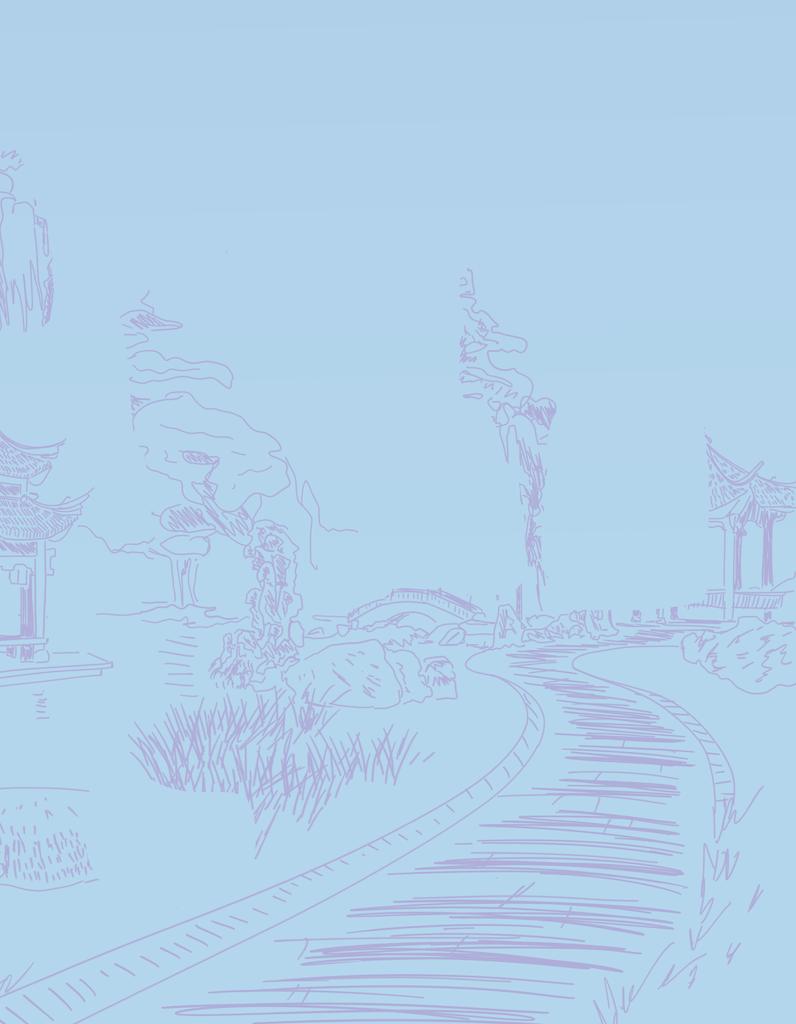
Guanyin, although at the time called Miao Shan due to her mortality, was the daughter of a cruel and uncaring king. Per her father’s request, Miao Shan was to take a suitor; however, she did not wish to marry, rather she wished to become a Buddhist monk. Unable to find a suitor that pleased Miao Shan, her father reluctantly allowed her to go live at the temple but instructed the monks to give her the most difficult tasks with no break.
As she diligently worked, the forest animals took pity on her and assisted her with her chores. Outraged, her father set fire to the temple, but Miao Shan extinguished the fire with her bare hands, walking away unscathed. Because of this, her father believed she was possessed by a demon and sentenced her to execution. At her execution, it took the executioner many attempts to kill Miao Shan because every weapon he used would break. Miao Shan felt so bad about the trouble she had caused the executioner that she allowed herself to be murdered and absorbed his karma so that he didn’t have to pay for her death. Upon her death, she descended into the Hell-like realms where she was overcome with grief because of the amount of suffering and horror that was happening. Miao Shan released all of the good karma that she had absorbed throughout her lifetimes which released the souls into Heaven and Earth. In order to prevent the destruction of his kingdom, Yanluo, King of Hell, released Miao Shan back to Earth and to Fragrant Mountain.
It is on Fragrant Mountain that Miao Shan offered up her eyes and arms to a monk in order to make medicine for her ill father. Once her
father recovered and found out that it was his own daughter that made the sacrifice, he begged for her forgiveness. At the end of the tale is when Miao Shan transformed into the Thousand Armed Guanyin and was set to reside in Heaven. On her ascent however, she heard cries of suffering from the people of the world and abandoned her original plans. Upon returning to Earth, Guanyin vowed to never leave until all the suffering of the world came to an end.
Guanyin and the Thousand Arms
In this legend, Guanyin vowed to never rest until she had freed all beings from samsara, or the cycle of death and rebirth, which life in the material world is bound to. Despite her strenuous efforts, she realized

she was unable to free everyone, causing her much distress and her head to split into eleven pieces. Eventually, her arms also shattered into pieces. Amitabha Buddha came to give her eleven heads to hear the cries from the suffering and a thousand arms so that she could assist as many people as she could. In other depictions of the legend, Guanyin is also given a thousand eyes, some even in her palm, in order to see in all directions. With this form, she represents the omnipresent mother who sees everywhere all at once, senses humanity’s afflictions and extends her arms to alleviate their pain.
Lessons
The current world that we live in is one of great violence and hatred. Within this mess of a fight to end up on top, there are individuals who seek to find value instead. The value of life is something that can be taken from Guanyin. In order for life to be full of love and compassion, one must put the same into the universe first.
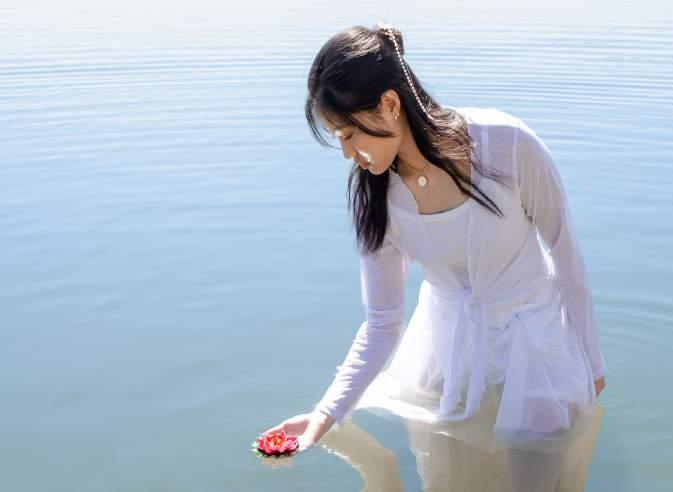
SPRING 2023 | 15
Value of life is something that can be taken from Guanyin.
Calling Home
How Asian Americans adapt to college life in their first years
 written by Justin Fernandez
written by Justin Fernandez


For many high school seniors college life beckons them as a natural step in life, full of promise and change from their formative years. The move to college in an Asian household, however, can be as uniquely difficult as it is freeing.

The stereotype of the Asian immigrant “Tiger Parent,” who keeps a constant watch on their child and holds them to skyhigh academic and extracurricular expectations, was very much a reality for some students before college. The practice is especially appealing to immigrant parents who have trust in the “American dream,” pushing their children to help them succeed. After tracking how practitioners’ balance of warm love and harsh criticism affect Asian students, Shanting Chen, an assistant professor of psychology at the University of Florida, concluded that it isn’t as successful as it seems. She reported that “adolescents have a tendency to move away from family and have this huge urge for autonomy” which isn’t allowed by tiger parenting. In high-stress housing situations like these, creating space between the student and the house they grew up in can better their chances to grow as individuals.
Despite this phenomenon, for many others, absence really does make the heart grow fonder. Spending time away from home can also improve students’ relationships with their parents and ease tensions within the household. This was the case for Matthew To, an 18-year-old first-year student at UF. To explained, “But I think spending time away from my family has helped us grow closer. Living in a different room is definitely a lot less stressful on our relationship.”
A crucial aspect of transitioning into adulthood is finding one’s own way of life, and it’s natural for that belief to conflict with those of the people around oneself, even — or especially —



one’s parents. For Matthew, who had found his ideal lifestyle incompatible with his parents’, leaving home for a college that aligned his values was simply the next logical step.
Indeed, the physical and spatial departure from one’s childhood bedroom into their own independent dorm room parallels the more profound and intrapersonal transition each student takes into the next stage of their lives. Without the pressure of living under their parents’ roof — or living under their expectations — students can freely develop as their own people, complete with their own interests and sense of autonomy.
With age and autonomy comes maturity, and with maturity comes respect — at least eventually — from family. For Leo LeeSpagnolo, an 18-year-old first-year student at UF, freedom comes in many forms now that he’s on campus. “I think [my parents] recognize that in college, inevitably I’ll go to some parties or some bar, and in the end I have to be willing to accept the consequences,” he reasoned. “I think they felt that the more I grew and went to college, they couldn’t monitor my everyday life.”
In the professional psychological field, “monitoring” is a core dimension of parent-child relationships, measured alongside a range of factors including “warmth,” “hostility” and “reasoning.” According to Chen, as a student transitions to a college away from home, the amount of monitoring and reasoning tends to decrease and increase respectively. Whereas the ability of parents to surveil their children’s academic and social endeavors decreases, their reasoning — the likelihood to listen to their children’s opinions, or provide


“Our lifestyles don’t match at all, so having that under the same roof has caused us a lot of problems.”
Matthew To
16 | SPRING 2023
photos by/Hayli Balgobin design by/Mya McGrath models/ Lena Huynh
explanations behind their own decisions — increases. Logistically, once a student gains autonomy over their personal life, the onus of dealing with consequences falls on them; the resulting maturity is something that is largely respected by their parents, and that respect manifests in letting them live even more autonomously.


And logically, autonomy blossoms into opportunity. Regardless of parental influence, college stands as the next frontier of life for freshmen. Without the stringency of high school curricula and class sizes, university life facilitates personal growth both socially and academically. Declaring a major is noncommittal for incoming students, allowing them to explore their career paths before they truly settle into them. In high school, small classes can feel especially stale, with students interacting with the same people or cliques every day. The natural variation of college life — with its abundant class sizes, clubs, and extracurriculars — means that students can constantly interact with new people until they find a group that perfectly suits them.
Leaving the house, however, doesn’t necessarily mean that students can’t bring their home along with them. Many students at UF combat homesickness through the strong sense of culture and family that they cultivate through various Asian American Student Union (AASU) organizations. Organizations bind students together socially, allowing them to regularly engage with cultural practices and meet other people like them. This type of socialization is the heart of AASU, especially for students that had little opportunity to explore their culture prior to college, like Lee-Spagnolo. “In the part of South Florida where I was, there weren’t many Asians, so I didn’t get to experience what my ChineseTaiwanese culture was,” he explained. “But when I came to
college, I was very surprised about how many Asians there were at UF.”
“Having a reliable sense of community is not only integral to a positive college experience, but also for personal identity development”, Chen claimed. When asked about stressors specific to the Asian American community, she explained that “being able to find a community of a similar culture or religion, or even people who can speak the same language, can be a little challenging, [but] being able to find one’s group — friend support, family support — is very important.” It’s through AASU’s organizations that many students plumb the grandeur of their own cultures for the very first time, bringing undergraduates together as a family. In Lee-Spagnolo’s case, there’s always room for expanding one’s knowledge of their culture and spreading it around for everyone to enjoy. As the Internal Vice President of the Society of Taiwanese and Hong Kong Students, he believes that will be a “pivotal moment” for him as he more intimately explores how to express his Asian American identity.
Despite all the opportunities for growth and freedom that college provides, the upsides of college can’t prevent students from feeling homesick or from missing their families. The “home away from home” title that students attribute to their friends, organizations or houses at college all inevitably pale in comparison to the real thing, leaving undergraduates yearning to talk to their families again.
“I’m an out-of-state student, so I call my mom every day, [and] I talk to my dad when he’s home,” Matthew reflected.





Regardless of opinion difference, lifestyle compatibility or childhood experience, a component of maturation for many people is coming to understand the perspective of their parents. It’s easier to empathize after achieving independence, when one’s feelings to reconnect with one’s parents are reciprocated hundreds of miles apart.
College can be stressful for underclassmen as they learn to balance their time between different areas of growth like classes, career paths and extracurriculars. With that dip into adult life, it’s important not just to reflect on one’s personal progress, but also to share them with the people happiest to hear about it: the parents. “I check in on my parents every other week, even if it’s only for a two-minute conversation,”
Between schedule-eating exams and stressinducing dance practices, it’s important to the students of AASU to soothe their homesickness and ultimately make time for their families. For them, after everything, it’s important — even if only for a two-minute conversation — to be calling home.

“Having a reliable sense of community is not only integral to a positive college experience, but also for personal identity development.”
SPRING 2023 | 17
- Shanting Chen
written by Tarryn Nichols
Everlasting LOBES of LOVE

In ancient Asian mythology, ginkgo biloba leaves symbolized love and longevity. How do these tales from ages past compare to modern-day love and relationships?
Lin Daiyu gingerly lifted the box crafted from ginkgo leaves, her hands buzzing with anticipation. “One last look,” she thought, as her eyes caught the last lines of a poem she had inscribed on the underside of the lid:

“The very sight of you dissolves me to tears. These are leaves of a tree I plucked for you. How many ginkgoes grow on river islets?”



She clasped the cover shut, enclosing inside a lengthy letter written with a silver pencil and golden inkstone. Her thoughts strayed to Jia Boayu the way a river flows to the ocean. Would he accept this token symbolizing the depth of her feelings for him?

This scene hails from the famed 18th-century Chinese novel, “Dream of the Red Chamber,” in which Lin Daiyu gifts Jia Baoyu a box of ginkgo leaves as an expression of her love. The two were kindred spirits with a shared love of the arts, despite both contending with intense familial and societal pressures. Their relationship was a powerful expression of the tension between love and duty, passion and tradition, and the search for meaning and connection in a complex, cold world.
In many tales of Asian mythology, ginkgo biloba leaves represent pure love and eternal commitment. Like the intertwining halves of the Yin-Yang symbol, the two symmetrical, fan-shaped lobes of the ginkgo leaf merge at the petiole as a sign of harmony amidst opposing forces. The ginkgo biloba leaf carries a more unique charm in flower language. Its two-fold shape reflects the balance of contrasting energy in relationships– passion and patience, independence and unity – after “a lifetime waiting” for the right partner. This makes it a perfect choice for expressing one’s undying affection. While the ginkgo tree can survive even when planted alone, it cannot reproduce, emphasizing the importance of unity and companionship in life.
photo by/ Carolina Tortorelli design by/ Tiffany Vivi Nguyen model/ Lesley Banh and Ron Osario
18 | SPRING 2023
Now, the way to someone’s heart might not be ginkgo biloba, but boba instead. When Ron Osario first saw Lesley Banh after being paired together for a secret santa gift exchange, his first thought was, “Oh, she’s cute!” The two met at a joint event hosted by their respective Asianinterest fraternity and sorority where they successfully hit it off. Osario, dripping with extra dough from his new job as a medical scribe, decided he would “ball out on this girl” and showered Banh with Gator gear, gift cards and a boba cup from Teastori.
Four years later, their focus is on their future together. Banh and Osario explained that having “similar ambitions” is what attracted them to one another – both are majors in health education, hold strong family values and are first-generation students with a love for dance.
On the flip side, navigating cultural differences as a Vietnamese and Filipino couple has been both a challenging and rewarding experience. The two cultures share many commonalities but vary in terms of social rigidity and traditional roles. Banh even said she was “very lucky” her mother was accepting of her having a Filipino partner, as many Vietnamese parents prefer their children to marry within the culture.
“Growing up, my family was very traditional – as in, there were still gender roles. My mom told me how to cook and clean, how to be a mom, how to be a housewife. I was always prepared for those duties. So when I met his parents, I helped out in the kitchen,” Banh explained. As for the expectations of a man coming into her family, Osario checked off the box of financial security through his promising future career as a physician assistant.
On Osario’s end, he said he experienced minor pushback from his family regarding how they manage finances and home duties. These pressures did not stop them from building an equal partnership and dividing up the responsibilities prescribed to their roles. “I love cleaning– it’s one of my favorite things to do. In terms of cooking, I’ve learned to cook Vietnamese food, too. So, I don’t just let her prepare stuff in the kitchen. I don’t show up just to eat. I actually want to be able to do this on my own and help out in the future when we have kids.”
In Filipino culture, harana is a traditional display of love in which a young man “bears his heart in song” to a woman. That’s why when Osario sheepishly




serenaded Banh at karaoke in front of his family, it was partly to include her in a homage to his roots. Karaoke is one way the couple connects over their separate customs, along with sharing food dishes and wearing traditional clothing such as the Vietnamese ao dai.
Mae Delassantos, a third-year civil engineering major, speaks on her longdistance relationship with her partner of five years. “With Asian culture, there’s an essence of ‘giving’ when being close to someone. We aren’t able to give each other the same attention other couples do, so when we do see each other it’s a big deal.” Despite the couple treasuring their time in person, living hours apart inevitably causes them to miss out on fostering close relationships with each other’s families — a keystone of Filipino culture. However, this same distance allows them to be more independent and focus on their personal goals outside of the relationship.
“In the past three years, there have been so many technological advancements towards supporting long-distance relationships,” Delassantos continued. This was largely spurred on by the COVID-19 pandemic because a majority of people had to maintain communication with loved ones solely through online channels.
A date doesn’t just mean going to the movies or dinner, it could also be a night spent gaming with your significant other on a shared Minecraft server while bantering over the headset. There are tons of two-player games out there that make it easy to connect with a partner through teamwork and simple fun. As a bonding pastime, Delassantos and her boyfriend play “Portal 2” and “It Takes Two” together on top of the more sociable games they play with their online friend group.
Unfortunately, cut up fruit for someone as an apology over the phone. In Delassantos’ words, showing affection in Asian culture involves many “little acts of love.” There is sometimes a disconnect with older generations when it comes to understanding long-distance relationships. They view separation as simply a drawback rather than an indicator of a strong relationship. While keeping the future in mind is important, solid communication and showing love when physically apart are fundamental. In fact, you can express those acts of love “by your own rules” as Delassantos continued, “whether it’s sending them a meme that
reminded you of them or doing a check-in, I think those little acts have more weight in a long-distance relationship.”
While the face of love has greatly changed in modern times, the same challenges persist in dating and relationships among Asians. Osario and Banh are an example that cultural differences can be grounds to strengthen their connection. In another way, Delassantos and her partner show that love nowadays is not restrained by physical distance or cultural expectations.

The ginkgo leaf’s form has inspired many artists from around the world, one famously being Johann Wolfgang von Goethe. In his 1819 love poem, Ginkgo biloba, the lines
To take a lesson from the ginkgo biloba leaf, Delassantos advised that “it’s important for younger Asians going into relationships to have independence from their parents’ expectations. Find what you want and embrace that.” Striking a balance between modern norms and tradition when dealing with cultural expectations may be complicated— just as complicated as nurturing both autonomy and connection in a partnership. Thankfully, reaching this harmony makes way for lasting bonds and finding peace with one’s identity.

SPRING 2023 | 19
“I have found a sense that’s true: Is it not my song’s suggestion, that I’m one and also two.”
Empowering Stereotypes
STEM and them: Asian Americans and the challenges they face in the field
 written by Yeleeya Li
written by Yeleeya Li
Science, technology, engineering and mathematics. The STEM field: a highly esteemed branch of studies involving logic, problem solving, research and healthcare meant to propel humanity forward with innovation. And within the STEM field, there is one minority race that seems to dominate all: Asians.
Seen as being “naturally smart” and having an easier time than others in academics, this stereotype seems to hold true. Asians have the highest average SAT scores, MCAT scores and GPAs of all racial groups. While Asians make up only 6% of the workforce in the United States, they make up 17% of all STEM workers, making them “overrepresented” in terms of overall numbers. Though many Asians are successful in STEM careers, these statistics and generalizations don’t tell the entire story.
Generational Challenges
Within the STEM field, the Pew Research Center reported that American-born Asians only make up 18% of the Asian workforce. This discrepancy is clearly mirrored today.
Larry Lee, a physics professor at the University of Tennessee, finds that while there are many Asians in his current field, he’s the only American-born Asian in his department. This disproportionality is also seen at many other universities, including the University of Florida.
While initially these numbers may seem a little odd, they do make sense. The experiences of foreign-born and Americanborn Asian Americans are vastly different. Dr. Lee stated, “In Asia, they have come up in a system where they’re not the minority […] and clearly don’t have the same experience as those of us who did come up in a White-dominated culture here in the US.” Philip Chang, a professor in the UF Physics department, agreed. Though he was born in the U.S., Chang grew up in Korea and sees himself as more of a first-generation immigrant than a secondgeneration immigrant.
While first-generation immigrants often have to deal with issues like language
barriers, cultural differences and assimilation, Asian Americans raised in the predominantly white culture of the U.S. tend to face issues with identity and fitting in. Akhilesh Makam, a third year computer science major at UF, described his high school experience at a predominantly white Catholic school. “If I ever brought Indian food, there would be one or two kids who would be like, ‘Ew that’s disgusting!’[…] Once I got out of high school I realized how much damage got to me.” Microaggressions and culturally insensitive remarks carry on with people as they grow older, impacting self esteem and self perception.
Gender Challenges
In STEM careers, only 28% of STEM workers are women, and even less are gender minorities. Non-males in STEM are often questioned, talked down upon and dismissed more than their male peers. For Asians, this prejudice may even be worse, as Asian women make up the smallest percentage of scientists and engineers employed in the U.S. by race and gender.
Hailey Pham, a first year computer science major, explained that she has experienced more prejudice in STEM due to her gender than her race. “In my high school classes, I was the only girl taking compsci, but by no means was I the only Asian…I feel like a lot of the time, I get questioned if I know what I’m doing.” Pham is not alone. In a survey of doctorate students conducted by Caltech, Asian American women felt they needed to prove themselves to a much greater degree than women of any other ethnic group. Perhaps it is the pre-existing disadvantages towards women in STEM paired with racial stereotypes that set high expectations for Asians women, creating a paradox where Asian women are expected to fail because of their gender and succeed because of their race.
For those who identify as a gender minority, their treatment may be even worse than women. Ashly Almendrala, a second year microbiology major, who identifies as nonbinary but presents as masculine, said “People’s initial reactions to me as a person is sometimes disheartening because I can tell in their face that they’re kind of disgusted because of the way I identify.” This kind of treatment of gender minorities is not rare, and the National Institute for Health finds that gender minorities have a very low rate of retention in STEM fields despite having the same academic qualifications. For many, coming out means facing the discomfort of being asked intrusive questions and not being taken seriously.
Support
Despite all these challenges, finding a support system can help students with these struggles in the STEM field.
For some like Yusra Ahmed, a third year public health major, it lies in joining a club to access more opportunities. Ahmed states that Health Educated Asian Leaders, an Asian interest pre-health organization at UF, was able to connect her with academic resources and help her form study groups, which can be hard to do in classes with over 200 people. As the current Internal Vice President, she hopes that HEAL is able to give them the same sense of support she received.
Makam strongly advised finding a good mentor as well. He joined the Society of Asian Scientists and Engineers and got matched to a mentor, who helped introduce him to a variety of leadership opportunities and career-building strategies after he transferred to UF. “If you don’t start immediately [in computer science], then you’ll fall behind ... thanks to my mentor, I was able to get to the point where I’m supposed to be at.” For Makam, having someone who had been through similar situations and was willing to give advice made the road less scary.
For all, it was about finding a community who could accept and uplift them for who they are. This way, they are never truly alone. “There’s definitely still stereotypes here in college,” Makam explained. “If this was my high school, I definitely think it would have negatively impacted me, but I know people now, I have a support system, it doesn’t affect me as much.” A group of people to rely on helps mitigate the social, academic, emotional and financial stresses of school, especially in STEM majors, which requires rigorous coursework and numerous extracurriculars in order to be considered a competitive candidate.
Science, technology, engineering and mathematics. In the ruthless pursuit of hard facts, quantifiable data and unbreakable logic to advance humanity, it’s easy to forget that humans are also the ones behind this innovation and invention. For students navigating the STEM field, constantly surrounded by centuries of ideas, millions of dollars of equipment and state of the art technology, perhaps the key to keeping sane is something much simpler, something much more, well, human. Almendrala said it best. “If there’s a hundred people in the room, it only takes one person to make a difference…My biggest resource was just a friend.”
20 | SPRING 2023
by/ Madison Edwards
If there’s a hundred people in the room it only takes one person to make a difference ... my biggest resource was just a friend.
Asian women are expected to fail because of their gender and succeed because of their race.
design “ “ “ “ SPRING 2023 | 21




photos by/ Kat Tran
models/ Zeid Abdurahman, Nathan Collins & Kate Kang
written by Isabelle Coleman
Sweet Buns Bakery



With a soft chime, the door opens to a beautifully decorated cafe filled with warm colors and the smell of freshly baked bread. Sweet Buns is a Chinese-owned bakery with locations in Gainesville and Tampa, boasting a variety of delicious hand-baked Asian bread using traditional baking techniques. Gainesville’s Sweet Buns is located at 3102 SW 34th St, sitting next to Yummy House and Kung Fu Tea. When making their selections, customers are able to pick up a tray lined with parchment paper and put on a disposable glove while making their selection of baked goods. Daniel Kirk, a business student at the University of Florida, says,
“The atmosphere was warm and friendly, and the way they displayed the bakery made the food seem very appetizing.“



When I visited, I tried a variety of different types of sweets but the two that stuck out to me the most were the London Peach Cream Bun and the Pork Floss Roll. The two are a good example of how baked goods can range from sweet to savory. The London Peach Cream Bun is a sweet bread with cream and peaches sandwiched in the middle, giving it a light and airy texture with a sweet and rich creamy peach flavor.
The Pork Floss Roll was the opposite, offering a salty and savory taste to contrast the sweetness of the England Peach Cream Bun. With a flaky, golden brown exterior and fluffy pork floss cascading off the sides, it offered a burst of different flavors. Pork Floss, or rousong, originated from Hong Kong. It’s made from pork shoulder, and prepared by cooking the shoulder in soy sauce and sugar. From there, it’s shredded until it reaches a thin texture. Finally, it dries in the oven before drying it over a pan of wok, making the fine strands into fluffy strands. Sweet Buns has a wide range of baked goods to choose from, and due to their popularity, most items gradually sell out throughout the day. I suggest going in the morning or early afternoon for a wider selection. With its warm atmosphere and fresh baked goods, it’s always hard to stay away for too long.
photos by/ Cami Chan design by/ Srinithi Reddy
22 | SPRING 2023
Tea Moment




Walking into Tea Moment can be compared with the feeling of walking into a familiar afterschool hangout spot that you’d like to keep to yourself. Tea Moment is a small boba tea business located at 16 NW 18th St., in building 125. Tea Moment offers a variety of different types of teas and boba. From fruity teas, sweet teas and creamy teas, you can add in tapioca pearls, grass jelly, lychee jelly and more. From their variety of flavors, I ended up choosing the Matcha Strawberry with Tapioca pearls, which had a very unique taste. The original slight bitterness of Matcha paired well with the sweet syrupy strawberries drizzled on the bottom. Srinithi Reddy, a second year information systems major at the University of Florida says,

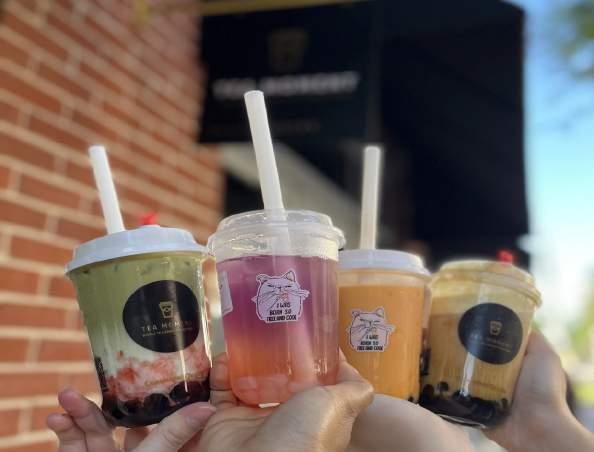

Srinithi talked about how she prefers Tea Moment to others because of how close it is to the UF campus and how reasonable the prices are. Tapioca pearls are a staple in each bubble tea drink and is one of the most commonly known add-ons for the tea. They were first introduced to Taiwan in the 1980s, and from there it further increased in popularity. Now, there are fun twists to the tapioca pearls, like bursting boba, which is the same as tapioca, except fruit flavored and pops when bitten down on. With their wide range of tea flavors and fair prices, Tea Moment is the spot to head to after class.
Paris Banh Mi
Bustling atmosphere, warm lights, and soft chatter fills the room when walking into Paris Bánh Mì, a Vietnamese restaurant offering a bursting amount of cultural variety. Located on 50 NW 13th St, Paris Bánh Mì serves a plethora of different types of food; Vietnamese bánh mì sandwiches, Korean corn dogs, bubble tea, pho noodle, ramen noodle and offers an extensive French Patisserie bakery as well. Choosing from the extensive menu isn’t easy, but whichever one you end up choosing, it won’t disappoint. Out of all the choices they offered, I ended up selecting the shredded chicken bánh mì, or also known as Bánh Mì Pate Gà Xé and hot cheeto Korean corn dogs stuffed with mozzarella cheese. The chicken bánh mì was crunchy, fresh and warm, and the hot Cheeto corn dog offered a spicier alternative flavor, pairing nicely with the cheese in the middle.
Bánh mì sandwiches were invented in the late 1950’s, around the mid19th century when Vietnam fell under French colonial rule. It’s a twist on the famous Parisian baguette, with popular Vietnamese ingredients inside such as: dried shredded chicken, jalapeños, pepper, mayonnaise, cucumber, pickled daikon, carrot, and cilantro. Korean corn dogs are like regular corn dogs, but with a twist. They have the option to do one stuffed full with sausage, cheese or half sausage half cheese. Along with that, Paris Bánh Mì gives you the options to coat it in hot Cheeto dust, topped with potato cubes, or topped with crispy ramen pieces. The original corn dog arrived in Korea in the 1980’s, but the twists began in late 2016, and is credited to Myungrang Hot Dog, a Korean hot dog chain in Busan, South Korea. With all different types of food from different cultures available, it’ll keep making you want to visit and try more!
SPRING 2023 | 23
“My favorite is a passion fruit green tea with lychee ... It reminds me of this Indian mango drink called Maaza and I would say it’s nostalgic for me.“
Two Part Harmony




 written by: Liana Progar|AJ Johnson photos by: Liana Progar|AJ Johnson|Nathan Swinburne design by: Aryam Amar
written by: Liana Progar|AJ Johnson photos by: Liana Progar|AJ Johnson|Nathan Swinburne design by: Aryam Amar
Backin Dec. 2022, K-Pop group Golden Child embarked on their Meet & Live Grand America Tour. Three Sparks Magazine members attend the Orlando concert for two very different reasons. Sparks’s photographers AJ and Nathan, applied and received the tour company’s press pass, allowing them to attend concerts for a short period of time for free. For AJ and Nathan, they said this would be their first time photographing a big concert, making it a new and exciting experience. On the other hand, Liana, Sparks’ writer and a fan of Golden Child, was overjoyed to have the opportunity to see Golden Child without having to travel to a different state. These two reasons created different yet similar experiences for the Sparks members.
LIANA
Having a best friend whose favorite group is Golden Child, I’ve had the honor of seeing them live twice before, with the Orlando stop being my third time. Going into the concert, I was not quite sure what to expect. I wondered if they would just stick to the same concert they did on their Meet & Live in USA Tour or if they’d find a way to change it up despite being on tour only a few months prior.
One thing I knew before the Grand America tour started was that main rapper and vocalist Tag would be a part of this tour and lead dancer and vocalist Bomin would not be due to a facial fracture (Woollim). During the USA tour, Tag was recovering from liver issues and was on hiatus (Woollim). Additionally, on the


USA tour, main dancer and vocalist Donghyun tested positive for COVID-19, and was unable to perform in Nashville and Atlanta, the two shows I saw. Automatically having different members performing would make the show different with different line distributions and dance formations.
The USA tour was great in itself since it was my first time seeing them live. The difference between the Nashville and Atlanta stops were how much energy the crowds brought. Nashville was lower energy and so the artists had to work harder to bring up the atmosphere whereas Atlanta was more lively allowing the artists to relax and become a little sillier. While the USA tour shows were great, the Grand America tour was far better.
Compared to the previous shows I saw, fans were more outgoing and Golden Child fed off that by becoming more alive and charismatic. Even before the show, I think they felt the different vibe of the audience prompting main vocalist Joochan, to come out of their waiting room and take selfies with the crowd below him causing quite the ruckus in the pit below.
Similar to the USA tour, once they started the show, they plowed through the first three songs like it was nothing and immediately vv`wanted to chat with the fans. They clearly doubled their efforts to learn more English since their last tour and used their increased fluency and vocabulary to maximize audience engagement.
spread courtesy of the University of Central Florida
graphics/ vecteezy.com, freepik GOLDEN
DAEYEOL - Y - JANGJUNT A GS E U N G M I NJ A E H Y U N - MOEBIJ - NUYHGNOD -
B O M I NO R L A N D O , F LU S TOUR -
CHILD
NAHCOOJ
24 | SPRING 2023
Due to Donghyun testing positive for COVID-19 mid tour, restrictions on how the group could interact with fans was increased. Before it was mandatory that fans wore masks and not touch the artists, but it evolved into Golden Child being unable to take fans’ phones during the peak fan interaction song, “Bottom of the Ocean,” and restricting close interactions generally. However, on the Grand America tour, they sought to find ways to include more fan interactions in the show. Golden Child asked more questions, did raffle giveaways, accepted a few gifts–for example, a really cute bunny hat–and they even took fans’ phones to record videos of themselves during “3! 6! 5!” and “Pump It Up.”
Consistent with the USA tour, they asked fans which songs they’d like to hear a snippet of live and in moments like this I could see how much they cared about fans’ opinions. They didn’t have time to sing bits of their entire discography, but they made an effort to take different suggestions to make each stop its own unique experience for fans.
Besides a few setlist changes, on the Grand America tour it seemed like they were a little more attentive towards fans. They listened and reacted to the audience extremely well. The members threw out hearts galore, read all the banners and posters, and they even started casually bantering with the fans during the giveaway like we were just a group of friends having afternoon tea and gossiping. I enjoyed being able to experience the different touches added throughout the concert to differentiate between the two tours.
Once inside, media was granted a prime spot just steps away from the edge of the stage. Nathan and I were quickly crowded by fans straining to get as close to the barrier as possible, including one attendee who politely asked me when I would be moving out of the way. She had noticed my camera, badge, and distinct lack of Golden Child-branded merchandise.
Soon, the group filed in from an overpass above the pit of attendees. After their appearance, the energy in the audience swelled. I turned around, squinting to spot the members over a mass of recording phones and waving lightsticks. I found my own excitement being piqued as they engaged the audience with enthusiasm and confidence
While the USA tour shows were great, the Grand America Tour felt more exciting and fun making it just a tad more stunning of an experience. It was clear that Golden Child took note of what international fans respond to best and with that information, put on a better, more unique show. Though, one thing that definitely did not change was the quality of their performances. With each step and each note, you could see how passionate they were about music and dance. It truly was a treat to be able to see Golden Child perform live for that alone.
AJ

Nathan and I arrived two hours before the show began, which gave us ample time to lament our shared lack of concert photography experience. Neither of us knew quite what to expect, not to mention we were not even familiar with the performing artists. In fact, this was the very first K-Pop concert either of us had been to.
Regardless, Nathan and I were ecstatic to be there, though, like the fish out of water we were, we had no idea where we were supposed to collect our physical media passes. Confused, we were content to trail behind the line of eager concertgoers as we discussed strategy, compared camera specs and decried the prices of the new lenses we hoped to buy.
Around us, our idle chatter mixed with that of eager fans, their anticipation becoming a thick, palpable buzz as the concert time inched closer. I felt my adrenaline grow, too, but for different reasons. The more I overheard the gushed enthusiasm of strangers bonding over their shared love of Golden Child and their music, the more I felt out of place. The camaraderie of the attendees felt much like a secret world to which I lacked access.
Eventually, an event volunteer steered us to the front of the line, which wrapped around two sides of the building to the venue’s entrance. Here, I felt even more awkward standing adjacent to concertgoers who undoubtedly had been waiting for this moment much longer than Nathan and I.
When the lights adjusted in preparation for the first song, the venue took a collective anticipatory breath before exhaling in a burst of energy when Golden Child began to perform. The liveliness of the crowd did not dwindle for the rest of the song.

As soon as the lights illuminated the members, I found myself on auto-pilot. My index finger pressed the shutter button in frantic intervals between minor setting adjustments. I was unable to pause, lest I lose precious seconds of the song. It was only until after the show when I was reviewing my memory card that I processed what I had actually witnessed. At the concert, my main focus had been capturing as much as I could.
The only coherent thoughts I allowed myself were making sure I was getting a variety of angles and coverage. My zoom lens worked overtime, switching back and forth from group wides to close-ups of particular performers as I strived to get even coverage of everyone. In my periphery, I recognized the patterns occurring in the lighting, working it to my advantage to capture vivid, dynamic moments.
At the conclusion of the song, I felt like I was pulled from a dream, awakened by the audience erupting into cheers. I remember looking over at Nathan, who was just as enchanted as I was. However, there was little time for me to say more than a brief, exhilarated comment before the second song began and the process repeated itself.
As a neutral observer, I could not enjoy the performances in the same way that the rest of the audience did. Their love for Golden Child, however, was palpable in the unwavering energy I felt around me. There was a freneticism in the pit and a sense of being surrounded by devotion at every turn. No matter how alienated I had felt waiting in line, it was impossible not to become one with the crowd as they celebrated the performers.
Photographing the concert was an incredible experience and I would love to shoot another one. It was a delight to capture what was clearly such a source of joy for everyone who attended, myself included.
“Ididn’trealizehowenergeticandexciting photographingaliveperformanceis.Thefans weresopassionateandtheperformerswere
SPRING 2023 | 25
- Nathan Swinburne
An Americanized Tradition



How Lunar New Year is Changing in America

As millions of Asian families immigrated to the United States, their traditions and culture followed them. Many families and communities have maintained the exact traditions that were passed down through generations; however, other groups have taken a different approach. This practice introduces the idea of cultural traditions actively influenced by American culture. One major tradition that has been impacted by this change is the Lunar New Year. According to the Smithsonian Museum of Asian Art, Lunar New Year is, “a celebration of the arrival of spring and the beginning of a new year on the lunisolar calendar. It is the most important holiday in China, and it is also widely celebrated in South Korea, Vietnam and countries with a significant overseas Chinese population.” This celebration includes traditions like not cleaning the house and having a large feast for dinner. With an everchanging family landscape, some families have chosen to modify traditions like those associated with Lunar New Year, causing each to have a unique celebration that may better fit their current demographic.
For Kiana Krutchaiyan, a firstyear student at the University of Florida, her family celebrates Lunar New Year with a few key changes. Krutchaiyan is half-Thai and half-Chinese, but mentioned that her family’s celebration is Chinese-based. She described it as casual and family-centered as her family does not spend as much time at their temple.

Aside from not heavily attending temple, Krutchaiyan’s family follows many other traditions. Their day of celebration involves a meatless meal during the day and a large family dinner at night. She is also not allowed to clean the house or wash her hair, which are two staples of Lunar New Year. She also participates in the process of making the traditional glutinous rice balls, Tang Yuan.
Krutchaiyan also noted the importance of maintaining tradition, and sometimes that means change. She believes, “Keeping the main cultural aspects of the traditions are nice, but you don’t have to follow it to a tee.”

Since arriving at college, Krutchaiyan has adapted her traditions to maintain the essence of Lunar New Year, just in a different environment. She explained, “I like how when I came to college I was able to continue some of it, like still going out for a big friends dinner, instead of a family dinner, with the people that I care about.”
Krutchaiyan and her family celebrate Lunar New Year while following many traditions, but they also enjoy a more laid-back day that consists of family time.
Similarly, in fourth-year University of Florida student Michael Shi’s family, Lunar New Year is tailored to his own family’s situation. Both of Shi’s parents are Chinese and first-generation immigrants; however, their celebration is toned down and features just a few typical traditions. He highlighted Hong Bao, the traditional red envelope gifts, as the start of his day. After receiving his Hong Bao, Shi responds with “Xīnnián kuàilè,” meaning
written by/ Ian Kim design by/ Elyza
Navarro
photos by/ Macy Phan models\ Yoonmi Hwang, Lena Huynh, & Destiny Tran
“Keeping the main cultural aspects of the traditions are nice, but you don’t have to follow it to a tee.”
-Kiana Krutchaiyan
26 | SPRING 2023
“Happy Chinese New Year.” Later in the day, Shi makes dumplings with his family and enjoys how they “laugh about how some of them are terrible and they’re gonna explode in the pot.”

To Shi, Lunar New Year is heavily influenced by American culture, and lamented how, “We don’t get a lot of time. America pushes us to be very individualistic, and very much like ‘our time is sacred.’ So you gotta go, go, go. So, even the times when we’re not together, it makes me appreciate it a lot more when we can just sit down and spend hours just making dumplings, eating together and having that time with family.”


Time is everything when determining what a celebration can cover. Shi mentioned a celebration by the Jacksonville Chinese Association and a traditional Beijing opera, both of which he cannot fit into his day. Instead, he and his family choose to spend quality time together to celebrate the new year. Shi explained, “We just don’t have the time to do all those things. So I feel like we choose the thing that matters the most to us, which is that time of being together with our family. We could go to a performance, we could go watch these things and we could decorate the house. But I think what’s most important for us is just having that time of togetherness being in that peaceful moment where we can just laugh, talk and eat.”
Although Shi’s celebration isn’t a typical new year celebration, he is devoted to









keeping his culture and tradition alive. He detailed that, “There’s something special about the history that has culminated, and thousands of years of people just doing this thing that they want to celebrate and show that there’s an importance to spending time together with your loved ones and then carrying that on.”
Shi’s Lunar New Year features several traditional events and foods, while also being adapted to what best fits his family. This tradition is “key to our identity,” according to Shi, and he believes that passing on tradition is important and will continue his cultural legacy.
As families and their following generations grow, traditions are bound to change; however, that does not mean these traditions should be abandoned, and change is not always hurtful. Asian families in the United States should learn to embrace a new and interesting take on cultural traditions and continue adapting to what works for each family or community. These changes occur naturally to better curate traditions towards younger generations, and they will ensure that these historical traditions continue to be passed down. Without any room for innovation, Asian traditions will be consumed by Western culture. Traditions should continue to adapt so that they are never forgotten and remain prevalent to every Asian American family going forward.
“We don’t get a lot of time. America pushes us to be very individualistic, and very much like ‘our time is sacred’. So you gotta go, go , go.”
SPRING 2023 | 27
- Michael Shi
Lost in translation
A look into the Japanese language

 written by Lex Mundy
written by Lex Mundy





“A different language is a different vision of life: 違 う言語というのは、違う人生のビジョンである。 ”
Whenit comes to communication, nothing is more beautiful than language. The language people use to discuss the world has a direct impact on how they perceive it. Language experts are always on the lookout for words and phrases that could inadvertently affect us. By becoming more aware of the impact and influence of language, people can make the decision to express themselves and comprehend others in more intelligent and thoughtful ways.
As one of the fastest-spoken languages in the world, Japanese is the ninth most-spoken language globally and the most learned language, alongside Korean, according to Duolingo, a language-learning platform. In contrast to other languages, the Japanese language uses three distinct alphabets: Hiragana (ひらがな), Katakana (カ タカナ), and Kanji (漢字). Hiragana means “flowing” or “simple” and appears the most out of the three alphabets.
“If you studied a European language, there are tons of irregular verbs. In Japanese, there are two-like two point five-in the whole language,” says assistant professor of Modern Japanese Literature and Culture at the University of Florida, Christopher Smith. In Japan, people don’t use phrases like “God bless you” and are less likely to say




no. Smith shared this is more cultural because there is a Japanese word for no (いいえ). “However you come off as very rude if you just say no.” When speaking Japanese, someone is more likely to say, “that would be a little difficult” instead of no because the manners are different. There is a type of respect language when speaking Japanese. “You’re expected to use extra suffixes that get attached to verbs when talking to your boss or talking about your boss,” says Smith. Whereas in the United States, people can speak about their boss in any way.
The difference between English and Japanese is often discussed in relation to anime when series are transitioned from subbed to dubbed. Anime is a Japanese animation style and is widely popular valuing $28.61 billion in 2022, according to Grand View Research, a market research company. Anime is originally created in subbed (spoken in Japanese with English subtitles), while dubbed is translated and spoken in English. When asking Professor Yasuo Uotate (魚立康夫), a Master Lecturer of the Japanese language at the University of Florida, his thoughts about it, he shared, “You have a limited amount of time and space on a screen to show subtitles. If you don’t understand Japanese and watch Japanese anime, you cannot avoid losing some emotion, meaning, content, etc.” People tend to watch things they can relate to; not understanding cultural upbringings or puns from different languages can alter personal opinions regarding shows, movies, and music. Uotate shared these Japanese phrases that “don’t have a direct translation in English.”
お疲れ様: Thank you (for your hard work); good work






Japanese tends to use one word or phrase to describe things, whereas English requires more. 愛 means love, but Koi No Yokan: 恋の 予感 expresses love at first sight, which is




“If you studied a European language, there are tons of irregular verbs. In Japanese, there are two like two point five in the whole language.”
-Dr. Christopher Smith
お世話になりました: Thank you for helping me よろしくお願いします: Thank you
仕方がない: It’s no use
28 | SPRING 2023
photos by/ Carolina Tortorelli design by/ Kate Lynne Pudpud model/ Hanna Maeyama
inevitable. Assistant professor of Japanese, Matthieu Felt, shared that the word “PasaPasa,” which means chalky or dried out in Japanese, makes it easy to describe the taste or texture of particular food while dining with his wife. Since some words and phrases lack a precise translation, some contexts may be lost during translation.

“Translating what characters are saying is one step, and for the dubbed version, you are adding another step with English voice actors, so you could lose more,” Felt mentions the ways voice actors are viewed in Japan versus America can also attribute to a loss in translation. “There’s this problem that in Japan voice actors are like a job, and people are famous for it.” He continued, “You might even notice that there’s the same voice actor who’s in multiple anime and often they even do different characters, and I feel like in the U.S. there isn’t as much of.” Animation in America tends to utilize famous celebrities. For example, in the popular Disney movie “Moana”, the Rock was the voice of Maui. “Pixar stuff, we get actors to be voice actors rather than having it be its own kind of specialized job, so I think also part of what’s lost.”













explains how Old Japan never had a word for the color green because it was so close to blue, so Ao (青) represented both blue and green. It wasn’t until Japan gained contact with Korea and Chinese that the language started adding different words to represent colors. The same thing applied to the color orange in Japan, they didn’t develop a word for the color until after making contact with the English.

Another thing that makes the language unique is its use of onomatopoeia. As Merriam-Webster’s collegiate dictionary states, onomatopoeia is “the naming of a thing or action by a vocal imitation of the sound associated with it (such as buzz, hiss).” Felt says, “There’s so many onomatopoeia that they’re classified into two different types.” He mentioned that he had heard that, because of the use of onomatopoeia in Japan, European nations, particularly France, tested their cosmetics there. “It’s completely anecdotal,” he said. “They’re kind of used as adjectives to describe the way you know makeup feels on the face, and so there’s this added dimension of explaining why something is like.” The Japanese language has evolved over the past few years. This is seen in the way Japan developed words for colors over the years. “There are historical reasons that the language is developed differently, but different languages have a different kind of set of possibilities for what you can express,” says Felt. He


Words can be tricky. Translating the word play is a good example. Felt states, “in English ‘play’ can be used for both an instrument and a game. In Japanese there’s no word that fits this description, you ‘do’ games, and you ‘blow’ wind instruments.”
Learning the Japanese language can be fun and different. Like Federico Fellini, Italian filmmaker says, “A different language is a different vision of life: 違う言語というのは、違う人生の ビジョンである。”

“There are historical reasons that the language is developed differently, but different languages have a different kind of set of possibilities for what you can express.”
- Dr. Matthieu Felt
“In English, ‘play’ can be used for both an instrument and a game. In Japanese there’s no word that fits this description, you ‘do’ games, and you ‘blow’ wind instruments.”
- Dr. Matthieu Felt
SPRING 2023 | 29
Masala Masala
ThePerfectBlendofPunjabiSpicewithAmericanSeasoning
Masala
A blend of spices that are essential to add life and flavor to food. Masala is what allows unique aromas to dance and spin, cultivating the taste of life. Growing up, I always considered myself similar to the meaning of masala. My Punjabi culture cultivated my upbringing at home, but American society cultivated my education at school. I chose Punjabi spices and mixed it with American seasoning to create my metaphorical masala of culture and ethics. My morals, values, and understanding of the world were a combination of the two cultures I’ve been exposed to.
Every spice brings a new richness to the flavor and as I lived and learned among my surroundings, I added on new spices to enrich my knowledge of society and dynamics. From playing in the streets of a bustling diverse city in California to playing by myself in a small Floridian suburb, each new experience added a flavor.
Elaichi
(Cardamom-aspicethatremindsmeofawarm houseonacoldwindyday;safe,secureandfilledwith love.)

Warmth is what I felt in California. Apart from the sunshine of San Francisco I remember the tenderness and affection of the bustling city. Hugs from countless relatives, laughter floating from one room to another in the house we shared, and the feeling of contentment. Strangers at parks became best friends in seconds, playing mermaids and pretending to rule the playground. Gymnastics, ice skating, taekwondo, and barbies predominated my time.
I fondly recollect the warmth of coming home as a feeling of comfort and a sense of belonging. Every day was filled with warmth and sweetness reminding me of the aromatics in elaichi. Filled with diversity and acceptance, California allowed me to thrive in a shared space where I could be proud of my culture and share it with classmates, neighbors and friends. Friends awed at my homemade lunches and we shared a collective respect for everyone’s ethnic food. California sprinkled elaichi in my masala and became the base of my cultural roots.
MIX
Haldi
(Tumeric- aspicethatremindsmeofanewadventure;somethingdifferent,ambiguous,andnerve wracking)




New eras and new beginnings. Suburban life was much quieter, much softer than the bustle of the city, and so I inadvertently began to reflect on my surroundings. Quietly and shyly I made friends with my new neighbors and schoolmates. I learned to be more self reliant and channeled my energy into new fortakings. Painting, writing, and music became my softer approaches to spending time. Moving to Florida brought a new self awareness. I went from living in a diverse community to feeling ostracized for being the only person of color in my class. Subconsciously I was always aware of how many other people of color were at my school.
by Nimrit Doad art and design/Nimrit Doad
spread courtesy of the University of South Florida 30 | SPRING 2023
It was in this time of critical growth that I adapted to American culture the most. I didn’t have any friends who shared similar home dynamics or cultures. I felt out of place, too different, too weird to be fully integrated into this society. Too Indian for one group, too American for another group. It was difficult to find happiness in between. Finding a balance and creating a dish in a kitchen that was not prepared for me proved to be more difficult than expected. I had to tailor my “seasonings” to fit the taste palette of the masses. It wasn’t until I was in college, when I fully began to embrace my roots and integrate the plethora of Punjabi spices in my own masala.
MIX
Jeera
(Cumin-aspicethatremindsmeofahome;aplace whereIcancomfortablegrow,learn,andthrive)




Nimrit’s masala
(AblendofexperiencesthathasmademethepersonIamtoday;strong,independent,andembracingallpartsofme)
Exposing myself to the community that surrounds me, empowers me, and pushes me to embrace the beauty of both cultures. Immersing myself in the flavors of my heritage and embracing the lessons it has taught me. I no longer felt obligated to choose between my roots and the society I was brought up in. I felt worthy of my masala and took gratitude in its reappearance. I became proud of my culture, proud of my upbringing and proud of myself for undertaking the challenge to make a space in the kitchen we call society. My masala is inherently unique to my inner struggles of a societal sense of belonging, making it all the more precious to me. Through the years of careful crafting, I’ve blended each spice with grace and passion, weaving new lessons into every batch. Even if fate grants me a million lives, I would still dedicate each one to creating my masala.
Togetherness. A simple word whose meaning lies intertwined in layers. A mixture of who I was and who I am today. Meeting new people in college drastically altered my perspective. I now was in an environment that treated multiple cultures as not being two separate dishes, but now as a combined fusion cuisine. I met so many people who were just like me and I was able to create this space of conversation over our similar experiences. College created an environment where I was able to collaborate and gain confidence in myself to embrace all aspects of my upbringing. It was in this environment where I envied those that had a sense of pride in both their ethnic culture and the American culture. While I had always hid a part of me to “fit in”, my new environment taught me to break the mold. This new sense of belonging, a sense of “home” is where I thrive. Surrounded by like minded people exploring their own masalas and learning to craft a flavor to enrichen their lives, regardless of what anyone says.
SPRING 2023 | 31

32 | SPRING 2023
SUN
written by Dzung Nguyen
photos and design by Leyun Wang
DAY
He’s crying. I stop thinking. My breath evaporates.


“I saw her last week, Hien, she was fine. Right, wasn’t she fine?”
Grandma had been moved to hospice care 10 minutes down the street where we could visit her often. I went back home last week to see everyone, including her. The nurses were so nice, but walking down the hallway still felt uncomfortable.
When I was little, Grandma towered over me. Colossus, with the personality to match, a robust and loud effigy. On the hospice bed you couldn’t tell that she was any of those things. She looked toyish, a caricature of someone I loved. She stirred and her eyes fluttered open.
“Bao, you look strong– you look healthy, Con.”
“Yeah I am, Bà nội.”
“Bà nội có khỏe không?” (Grandma, how are you feeling?)
“Bà nội không có nhiều thời gian, Con.” (I don’t have much time, my child.)
“It’s alright Grandma, it’s only going to be a little bit longer; you’re just here because of your back pain.”
My brother's voice came through clearer than ever.
“She has cancer, Bao. Stage four. It started in her spine but has metastasized for a while now.”
“We found out yesterday night. Can you come home please, I need you.”
The following months were a quagmire; a plod through without a semblance of life. The weeks blended together. Classes, bed, classes again. While I slipped into a murky, senseless void, our world fell into panic. News outlets sounded more like sirens, an exasperated warning. Cases of COVID-19 started to appear in Florida. I hadn’t comprehended any of what was happening until they sent us home. That visit, when Hien asked me to come home – he never asks for anything – it was the calmest terror I have ever felt. Grandma, the person before me, the person I loved was riding the last ripple of a wave, a knowing victim to her slow demise. That was the last time that I had seen Grandma. Before they sealed the hospices, the hospitals and everything stopped.

The day that Grandma died was like any other day. It had been so long since we saw her – I silently and stupidly prayed that somehow her illness could be cured, Schrödinger's cancer. We got a call on April
10th at 7:23 p.m. They had pronounced her dead five minutes prior. Dad, her dutiful son, quickly organized the funeral procession. A week from now, there would be a day-long ceremony and then a cremation.
On the day of the funeral, the sky was a gloomy cascade of gray. I learned that these clouds were called nimbostratus and we should expect continuous rain throughout the day. As my consciousness and thoughts echoed out, I could feel droplets of rain grip and wet my thin gray shirt, a gentle pitter-patter beginning. As if to say she was leaving. We, like the clouds that rolled in, began our service en masse, a drizzle of gray shirts and white headbands. There weren’t enough people there. Each row of standing sprays that lined the funeral hall represented a family that was barred from attendance because of the pandemic – including one of my uncles. Each of us wearing our own face masks, an indictment for the times we lived in. It wasn’t supposed to be like this. There was a clear separation. Two families. Ours, our cousins, and the singular monk. Six feet between all of us. The rounded sound of the singing bowl filled the hall followed by the rhythmic knocks of a wooden bell. The monk began to tell grandma’s story in musical prayer. She was born in Hue, Vietnam; it was both a rural nothing and everything. Even in such a small village, the war came and passed too, seemingly a life away when she was in America. Easy to forget, but it was circadian for her in Vietnam, biological. She died fighting, the same way that she lived: struggling to stay alive. Her favorite flower was the lily– she liked the way that they smelled, and her perfume smelled unmistakably like a stargazer. When the monk finished opening the ceremony, all of us joined in prayer. Me and my brother’s words slippery on the Vietnamese prayers, our efforts failing our mother tongue. It didn’t matter, it just needed to be done. Over the course of the procession we bowed, stood
Kenneth Khong Zachary Tenn Yuk
Models:
SPRING 2023 | 33

34 | SPRING 2023











































































 American Student Association: CASANova GBM
American Student Union x OAPIDSE: Tiny Desk Series
Starting off the year strong, the Korean Undergraduate Student Association took its members to Atlanta, Georgia!
CASANova Theta Class celebrated hosting their first GBM: Lanterns of Love!
The Filipino Student Association took to the woods in their annual camping trip to Ginnie Springs to celebrate the new RAKA pairings!
Hello Kitty Keychain and Andres perform for this new collaborative series in the APIDSE Office!
American Student Association: CASANova GBM
American Student Union x OAPIDSE: Tiny Desk Series
Starting off the year strong, the Korean Undergraduate Student Association took its members to Atlanta, Georgia!
CASANova Theta Class celebrated hosting their first GBM: Lanterns of Love!
The Filipino Student Association took to the woods in their annual camping trip to Ginnie Springs to celebrate the new RAKA pairings!
Hello Kitty Keychain and Andres perform for this new collaborative series in the APIDSE Office!
















 Student Organization: Pho 50
Kicked off Asian Kaleidscope Month with phenomenal performances and guest performer DanAKADan!
The Japanese Student Association enjoyed their first sports day in collaboration with schools across Florida and Georgia!
The Vietnamese Student Organization serves a variety of delicious food to raise money for One Body Village!
A panel with admission officers from around Florida and the U.S. that helped students prepare for future admissions!
Student Organization: Pho 50
Kicked off Asian Kaleidscope Month with phenomenal performances and guest performer DanAKADan!
The Japanese Student Association enjoyed their first sports day in collaboration with schools across Florida and Georgia!
The Vietnamese Student Organization serves a variety of delicious food to raise money for One Body Village!
A panel with admission officers from around Florida and the U.S. that helped students prepare for future admissions!










 photos by/ Macy Phan
design by/ Shiyin Hong graphics/ byunilho Pixabay
photos by/ Macy Phan
design by/ Shiyin Hong graphics/ byunilho Pixabay


 Thien-y Nguyen
Yoonmi Hwang
Gurleen Dhillon
Thien-y Nguyen
Yoonmi Hwang
Gurleen Dhillon














 written by Justin Fernandez
written by Justin Fernandez
























 written by Yeleeya Li
written by Yeleeya Li





















 written by: Liana Progar|AJ Johnson photos by: Liana Progar|AJ Johnson|Nathan Swinburne design by: Aryam Amar
written by: Liana Progar|AJ Johnson photos by: Liana Progar|AJ Johnson|Nathan Swinburne design by: Aryam Amar























 written by Lex Mundy
written by Lex Mundy







































































